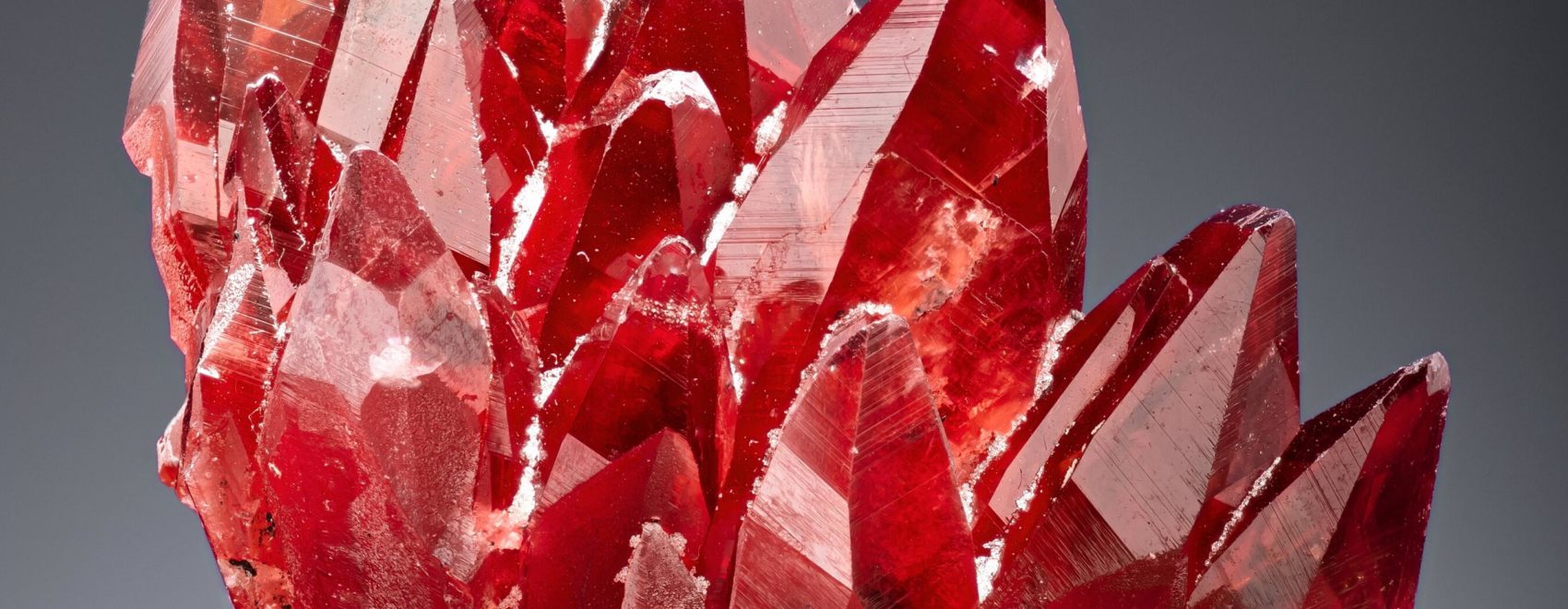FROM LUSTER TO LOCALITY, WHAT TO LOOK FOR WHEN BUILDING A MINERAL COLLECTION
By Rhonda Reinhart
Prized by science lovers and aesthetes alike, fine minerals continue to grow in popularity among collectors across the globe. “Mineral collecting, at its core, is the pursuit of all things beautiful and awe-inspiring,” says Tama Higuchi, Fine Minerals Department Coordinator at Heritage Auctions. “Minerals are the perfect blend of artistic aesthetics and incredible feats of chemistry and science, and that is what leads people to become obsessed with the hobby.”
These naturally formed crystalline structures – including highly sought-after species such as tourmaline, fluorite, amethyst and topaz – are nature’s sculptures, and they can be found in an infinite number of colors, shapes and sizes. No matter the mineral species, however, there are many factors to consider when choosing a specimen to add to your collection.
Enlarge
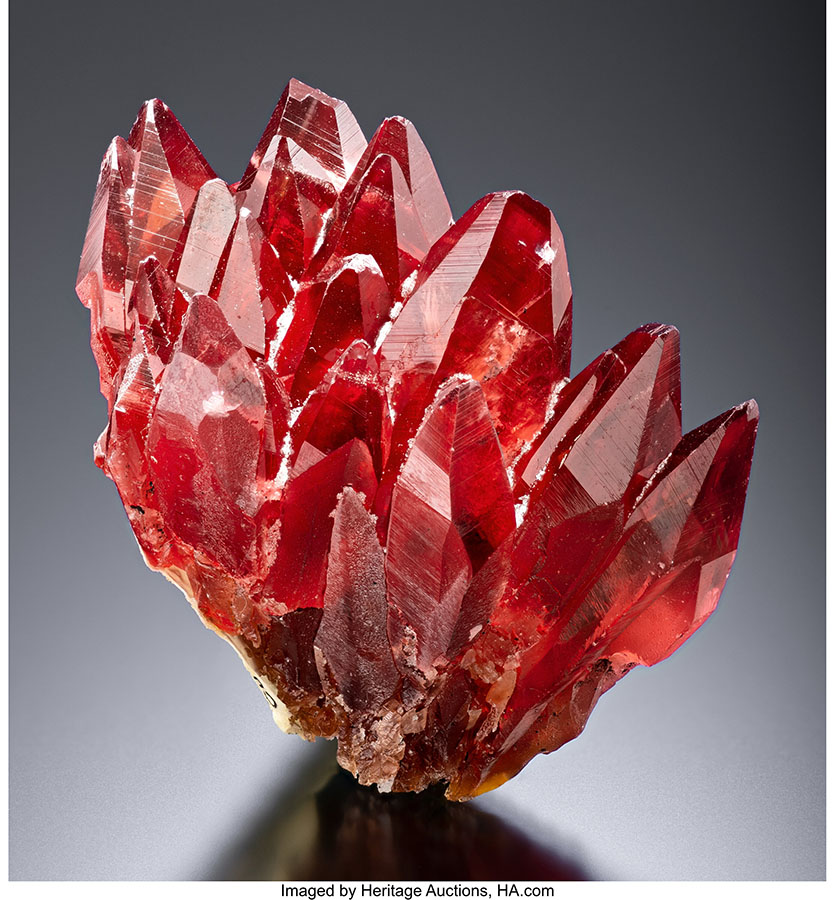
Color Is Key
A mineral’s color comes from the trace elements in its chemical makeup. Rhodochrosite, for example, gets its red hue from its manganese content, while azurite and malachite get their green and blue colors from an elevated content of copper. “The standards for color vary depending on the species, but generally, the brighter and more saturated the color, the more valuable a mineral is,” Higuchi says.
Enlarge
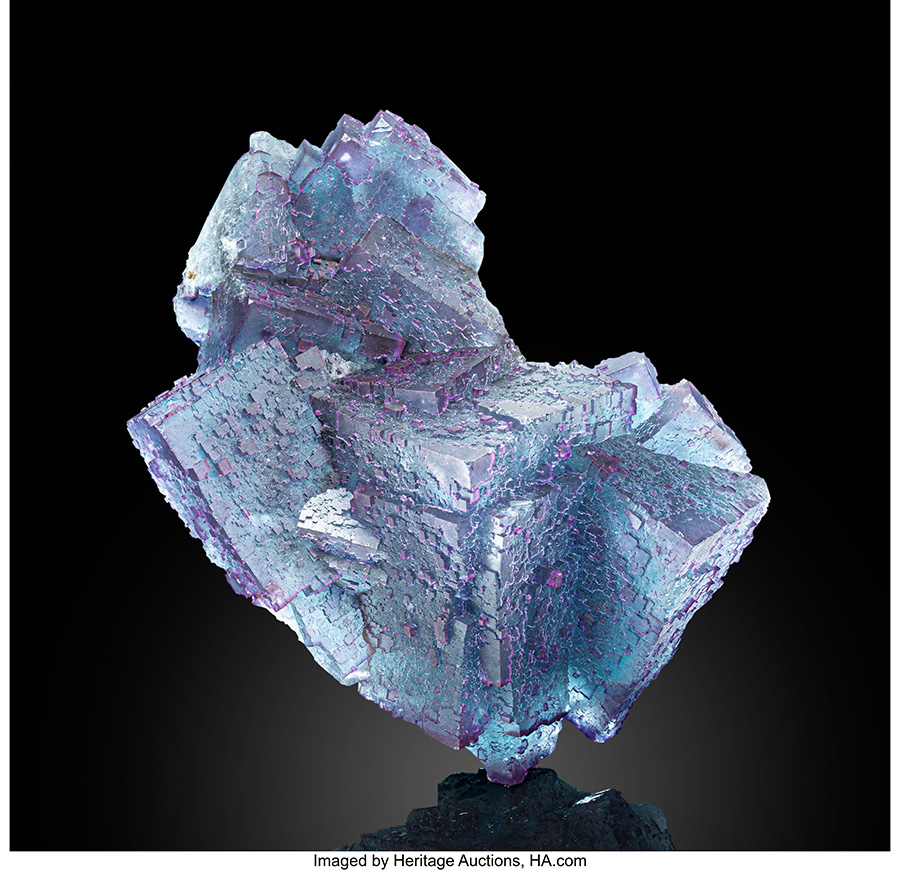
Fine Form = Fine Specimen
While beauty does lie in the eye of the beholder, when it comes to mineral collecting, there are certain characteristics generally believed to make a specimen more attractive. “This can be very subjective, but the aesthetics of a specimen involve how the specimen presents, how the crystals are oriented on the matrix (or host rock) and how ‘sculptural’ the specimen is,” Higuchi says. “Generally speaking, nice large crystals on matrix are the standard for aesthetics.”
Enlarge
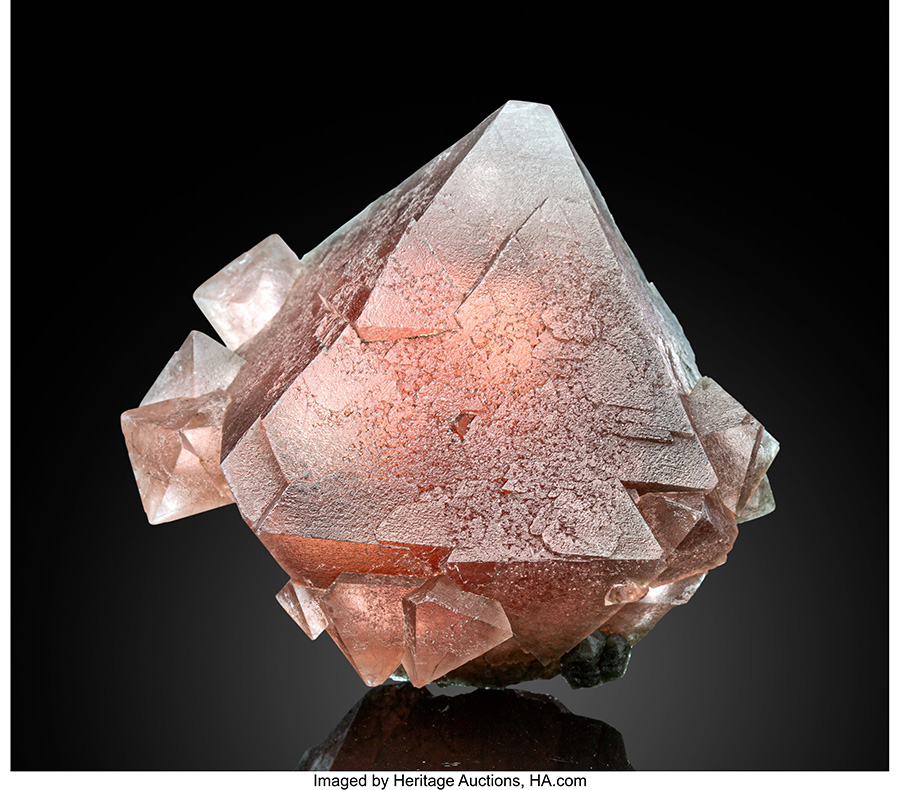
Condition Is Crucial
The less damage a specimen has, and the sharper the crystal structure is, the more valuable it is. “Many collectors refuse to purchase specimens that have even small chips on their crystals,” Higuchi says. So before you add a specimen to your collection, examine it carefully for flaws or, if buying or bidding online, look closely at the provided photos and descriptions.
Enlarge

Consider Luster and Clarity
Luster, which refers to a mineral’s light-reflective qualities, and clarity, which refers to its translucency, vary between mineral species, but both contribute to a specimen’s desirability. If a specimen’s surface has a shiny, mirrorlike quality, its value increases. Likewise, if it has a glasslike transparency, it is also considered more valuable.
Enlarge
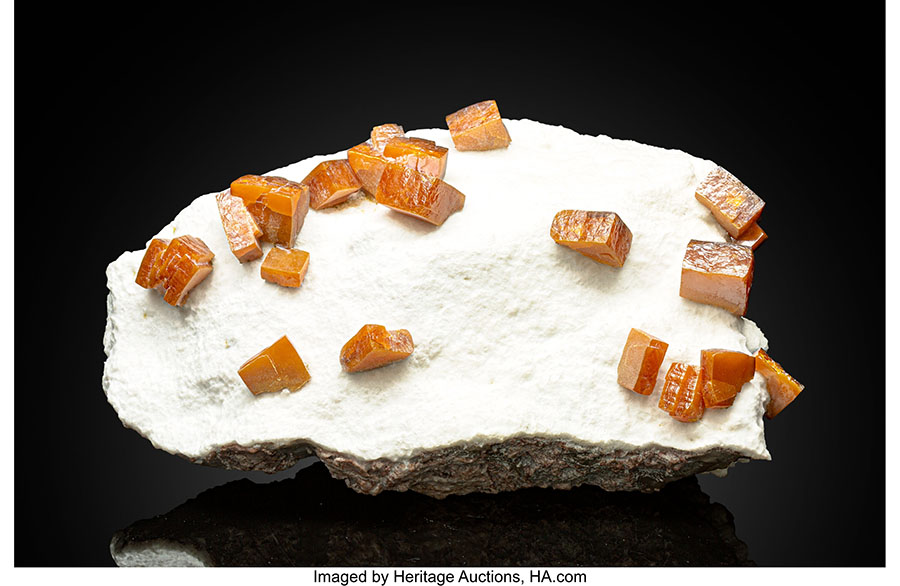
Know the Locality
Locality is the place where a mineral specimen was excavated, and it can often affect the desirability of a specimen. “Some localities are famous for the minerals that come from there, making those specimens more valuable,” Higuchi says, “or they are so obscure that specimens from that locality are scarce and highly sought-after.” Usually, localities are mines or regions. For example, the locality of most vanadinites on the market is Mibladen Mining District in Morocco, while many amazonite specimens come from Crystal Peak in Colorado. Occasionally, however, a specimen will be found in an uncommon locality, which will increase its value in the eyes of some collectors. “Every once in a while, you’ll see an amazonite that comes from another location, such as Ethiopia,” Higuchi notes. “And because that specimen is much more rare, some collectors might consider it more valuable than an equivalent amazonite from a more common locality.”
Enlarge
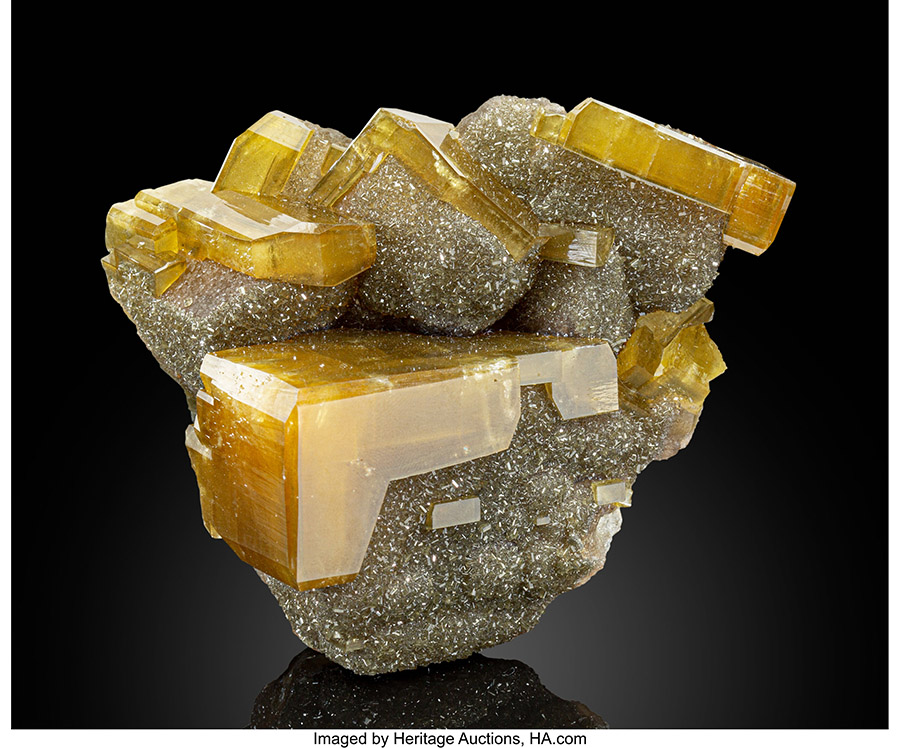
Pay Attention to Provenance
Keeping accurate documentation is a vital part of mineral collecting. The labels associated with a specimen document its source, history and previous ownership – and also contribute to its value. “It’s very, very important to create a label for each specimen and to also keep the labels that came before it,” Higuchi says. “A lot of older specimens, like ones that were mined in the 1800s, have beautiful handwritten labels, and those stay with the specimens as they carry on to different owners.”
Enlarge
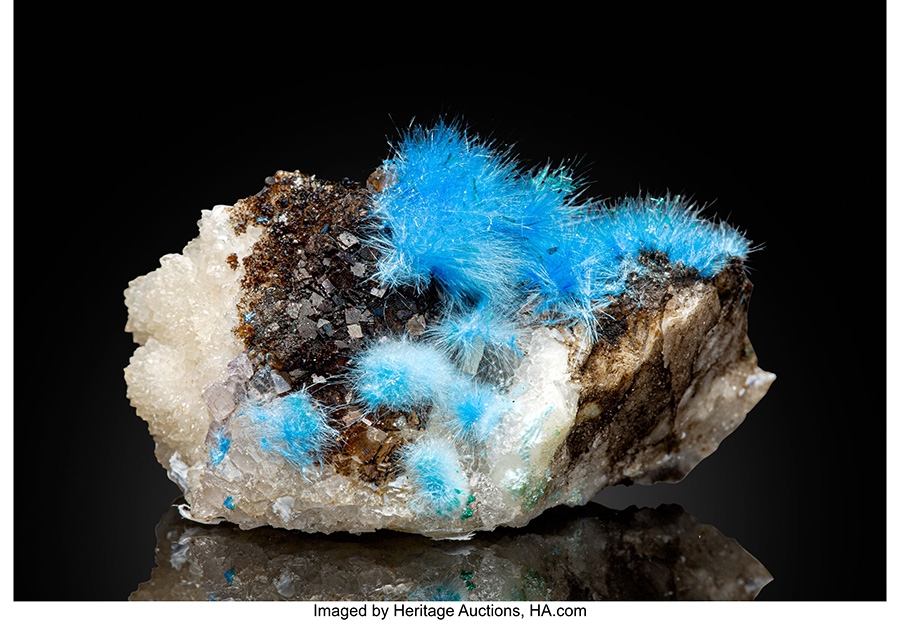
Bigger Isn’t Necessarily Better
Just because a specimen is large doesn’t mean it’s more valuable. A specimen may have an impressive size, but it could lack in all other factors. In fact, many collectors specifically seek out small but high-quality specimens, from miniatures to even little thumbnails. “We call this thumbnail connoisseurship,” Higuchi says. “Thumbnails are any mineral that can fit in a 1-inch cube or 2.54 centimeters. These days a lot of younger collectors are gravitating toward these smaller sizes, rather than bigger specimens. Essentially, these collectors are exchanging size for exceptional aesthetics.”
Enlarge
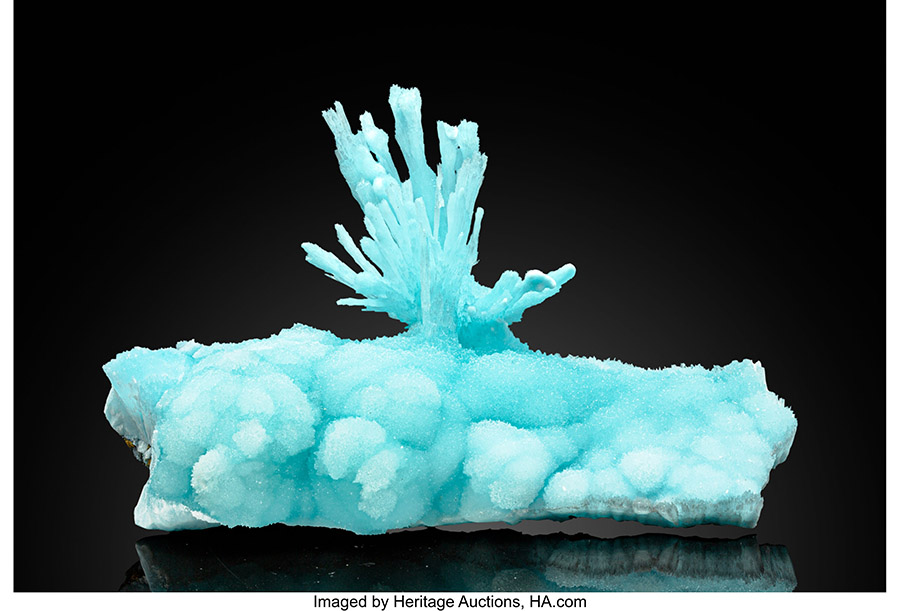
Caring for Your Minerals
“For the most part, it’s very easy to take care of minerals,” Higuchi says, “but in some cases, you do have to be careful about UV rays and heat.” Most minerals won’t be affected by light, but light-sensitive species such as blue or pink topaz can fade to white if left in sunlight, while some minerals, including vivianite, can darken in the sun. “Even more minerals can actually degrade in sunlight,” Higuchi adds. “They’ll start to crumble and fall apart. And sometimes, if there’s a rapid change in temperature, some minerals will crack.”
Enlarge

Buy What You Love
Minerals are meant to be admired, so if you focus on purchasing specimens that bring you joy, as opposed to those you think might be good investments, you’ll never be disappointed. It’s also important to remember that mineral collectors are mere curators of these geologic wonders. “When we pass on, the mineral specimens continue to display their beauty and will for years to come,” Higuchi says. “It is our duty to preserve these natural works of art and to ensure they continue to be appreciated.”
Heritage Auctions’ next Fine Minerals Signature® Auction takes place October 4. For inquiries, contact Nic Valenzuela at 214.409.1206 or NicV@HA.com and Tama Higuchi at 214.409.1257 or TamaH@HA.com.
 RHONDA REINHART is editor of Intelligent Collector
RHONDA REINHART is editor of Intelligent Collector

